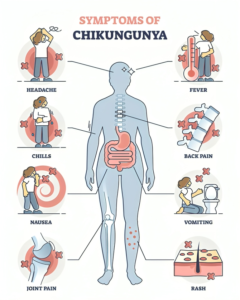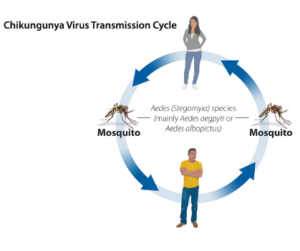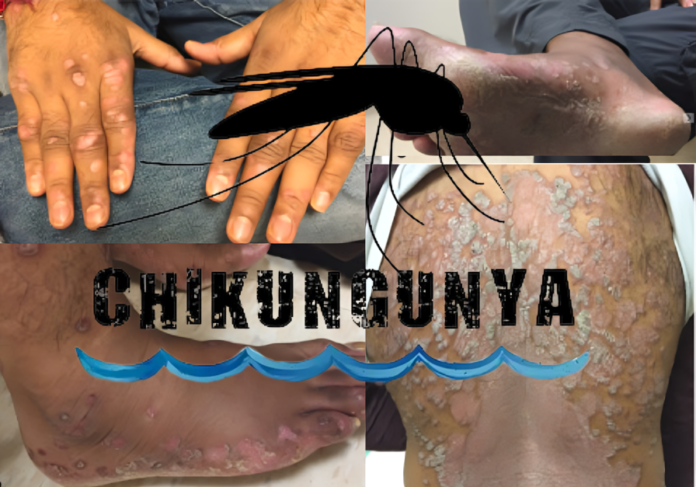The Ministry of National Health Services (NIH) has issued an advisory to combat the rising cases of Chikungunya Virus Infection across the country. This viral disease, caused by the Chikungunya virus (CHKV) and transmitted by Aedes mosquitoes, poses significant health risks to the population. The term “Chikungunya” translates to “that which bends up,” referring to the debilitating posture of affected patients.
Following recent outbreaks of Chikungunya in Karachi and other regions, the disease has become endemic in various parts of the country, much like Dengue fever. The advisory emphasizes that symptoms typically manifest four to eight days after exposure, though the range can extend from 2 to 12 days. Once symptoms begin, the virus remains in the bloodstream for approximately 5 to 7 days.
Symptoms of Chikungunya Virus Infection
The primary symptoms associated with Chikungunya Virus Infection include:

High Fever: Patients often experience a sudden onset of high fever, which can be debilitating.
Severe Joint Pain: One of the most debilitating symptoms, joint pain can persist for weeks or even months, affecting the quality of life.
Muscle Pain: Alongside joint pain, muscle pain is common and can add to the overall discomfort.
Headache: Many patients report severe headaches as part of their illness.
Rash: A rash may develop, typically appearing a few days after the fever.
Fatigue: Persistent fatigue can last for an extended period following the initial infection.
Transmission of the Chikungunya Virus

In addition to human-to-mosquito transmission, there have been reports of mother-to-child transmission in women who contracted the disease during the final week of pregnancy. Rare cases of spontaneous abortions have also been documented following maternal Chikungunya Virus Infection. However, there is currently no evidence that the virus is transmitted through breast milk.
The Chikungunya virus is primarily spread by the bite of Aedes mosquitoes, mainly Aedes aegypti and Aedes albopictus. These mosquitoes are active during the day, with Aedes aegypti also feeding indoors. Transmission usually occurs during or just after the hot rainy season, creating favorable conditions for mosquito breeding.
NIH Public Safety Guidelines for Chikungunya Virus Infection
In light of the growing concern over Chikungunya Virus Infection, the NIH emphasizes several key guidelines for prevention and management:

Avoid Mosquito Bites: To minimize the risk of infection, individuals are advised to use insect repellents, wear long-sleeved clothing, and use mosquito nets during sleeping hours.
Manage Symptoms: There is no specific antiviral treatment available for Chikungunya Virus Infection. Management primarily involves alleviating symptoms. Patients should rest, stay hydrated, and consider over-the-counter medications for pain relief.
Avoid Certain Medications: The advisory specifically cautions against the use of aspirin and other non-steroidal anti-inflammatory drugs (NSAIDs) such as ibuprofen and naproxen, as these can exacerbate bleeding tendencies in some patients.
Consult Health Authorities: Individuals exhibiting symptoms of Chikungunya Virus Infection should seek medical attention for appropriate management and care.
While there is no vaccine or antiviral treatment available for Chikungunya, understanding its symptoms and adhering to safety guidelines can help mitigate its spread. As the NIH continues to monitor the situation, public awareness and preventive measures remain crucial in combating this viral infection.


